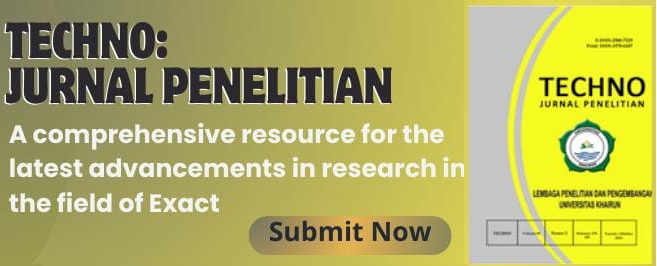Growth Performance of Pangasius sp Fed Different Types of Diets Formulated from Varieties Fish Meal Sources
Abstract
Pangasius sp is an introductory species that is widely distributed in freshwater regions in Indonesia since the 1990s and it was initiatively reared at the beginning of 2011 using a floating net cage in Lake Ngade, Ternate. Even though it has benefited economically, there is still a lack of information on its biological and ecological aspects. Growth and survival rate are two main factors that should be known to develop Pangasius aquaculture. The study aims to understand the growth and survival rate of Pangasius by mixing different fish meals into dietary. 120 Pangasius fingerlings were placed into 12 tanks. Diet was formulated using Pearson’s square method. Three different protein fish meal sources were mixed into feed formulation namely flying fish meal, Nile meal, and eel meal. Commercial feed was used as control. Filling Randomized Design (FRD) was applied with the experimental set-up of the treatments. The results show that feed stability in water ranges from 2'23" to 3'47" while feed durability ranges from 2'09" to 2'35". The survival rate of Pangasius is almost 100% except for treatment C. Growth rates vary among treatments which is the highest found in treatment A (16.42%) followed by treatment B (15.85%), D (15.57%), and C (7.00%) respectively. Nile fish meal is also significantly affected (P<0.05) by the Specific Growth Rate (SGR) of fish. Nutrition ingredients and water quality parameters are conducive to maintaining the fish's life. All in all, different fish meal sources in the formulated diet are significantly supporting Pangasius growth.
Keywords
Full Text:
PDFReferences
Boyd, C. E., & Pillai, V. K. (1985). Water Quality Management in Aquaculture. CMFRI special Publication, 22, 1-44.
Bhuiyan, M. R. R., Bhuyan, M. S., Anika, T. S., Sikder, M. N. A., & Zamal, H. (2016). Determination of Proximate Composition of Fish Feed Ingredients Locally Available in Narsingdi Region, Bangladesh. International Journal of Fisheries and Aquatic Studies, 4(3), 695-699.
Craig, S., & Helfrich, L. (2017). Understanding Fish Nutrition, Feeds, and Feeding. Virginia Cooperative Extension, 6, 420–256
Dawodu, M. O., Olutona, G. O., Ajani, F., & Bello-Olusoji, O. A. (2012). Determination of Mineral Trace Element and Proximate Analysis of Fish Feed. Global Science Books, Food, 6(1), 76-81.
Djajasewaka, H. (1985). Pakan Ikan (Makanan Ikan) (2nd ed.). Jakarta: CV Yasaguna.
Effendi, M. I. (1979). Fisheries Biological Method. Bogor: Dewi Sri Foundation
FAO. (2022). The State of Fisheries and Aquaculture. Tersedia: http://www.fao.org/fishery/ [20 Januari 2022]
Gupta, S. (2016). Pangasius Pangasius (Hamilton, 1822), A Threatened Fish of Indian Subcontinent. Journal of Aquaculture Research & Development, 07(02), 2015–2018. https://doi.org/10.4172/2155-9546.1000400
Gustiano, R., Prakoso, V. A., & Ath-thar, M. H. F. (2018). Asian Catfish Genus Pangasius: Diagnosis and Distribution. Indonesian Fisheries Research Journal, 24(2), 99. https://doi.org/10.15578/ifrj.24.2.2018.99-115
Halver, J., & Hardy, R. (2002). Fish Nutrition (3rd ed.). London-New York: Academic Press.
Herdiyanti, A. N., Nursyam, H., & Ekawati, A. W. (2018). Proximate Composition of Some Common Alternative Flour as Fish Feed Ingredient. The Journal of Experimental Life Sciences, 8(3), 207–210. https://doi.org/10.21776/ub.jels.2018.008.03.12
Hoque, M. S., Haque, M. M., Nielsen, M., Badiuzzaman, Rahman, M. T., Hossain, M. I., Mahmud, S., Mandal, A. K., Frederiksen, M., & Larsen, E. P. (2021). Prospects and challenges of yellow flesh pangasius in international markets: secondary and primary evidence from Bangladesh. Heliyon, 7(9), e08060. https://doi.org/10.1016/j.heliyon.2021.e08060
Iskandar, R., & Fitriadi, S. (2017). Analisa Proksimat Pakan Hasil Olahan Pembudidaya Ikan di Kabupaten Banjar Kalimantan Selatan. Ziraa'ah Majalah Ilmiah Pertanian, 42(1), 65-68. http://dx.doi.org/10.31602/zmip.v42i1.644
Kamarudin, M. S., Sulaiman, M. A., & Ismail, M. F. S. (2018). Effects of Dietary Crude Fiber Level on Growth Performance, Body Composition, Liver Glycogen and Intestinal Short Chain Fatty Acids of A Tropical Carp (Barbonymus Gonionotus ♀ X Hypsibarbus Wetmorei Male ♂. Journal of Environmental Biology, 39(5), 813–820. https://doi.org/10.22438/jeb/39/5(SI)/29
Korkut, A. Y., Kop, A., Saygi, H., Göktepe, Ç., & Yedek, Y. (2017). General Evaluation of Fish Feed Production in Turkey. Turkish Journal of Fisheries and Aquatic Sciences, 17, 223–229. https://doi.org/10.4194/1303-2712-v17
Orire, A. M., & Sadiku, S. O. E. (2014). Development of Farm Made Floating Feed for Aquaculture Species. Journal of International Scientific Publications: Agriculture & Food, 2, 521-523.
Park, S. J., Seo, B. S., Park, H. S., Lee, B. J., Hur, S. W., Nam, T. J., Lee, K. J., Lee, S., & Choi, Y. H. (2021). Effect of Fishmeal Content in The Diet on The Growth and Sexual Maturation of Olive Flounder (Paralichthys Olivaceus) at A Typical Fish Farm. Animals, 11(7), 1–15. https://doi.org/10.3390/ani11072055
Pratiwi, R., Hidayat, K. W., & Sumitro, S. (2020). Production Performance of Catfish (Clarias gariepinus Burchell, 1822) Cultured With Added Probiotic Bacillus sp. on Biofloc Technology. Journal of Aquaculture and Fish Health, 9(3), 274. https://doi.org/10.20473/jafh.v9i3.16280
Sadi, N. H., & Yoga, G. P. (2021). Skin characteristic of Pangasius Catfish in Indonesia. In IOP Conference Series: Earth and Environmental Science (Vol. 789, No. 1, p. 012026). IOP Publishing. https://doi.org/10.1088/1755-1315/789/1/012026
Slembrouck, J., Komarudin, O., Maskur, Legendre, M. (2003). Technical Manual for Artificial Propagation of The Indonesian Catfish, Pangasius Djambal (2003rd ed.). IRD-DKP.
Tugiyono, Febryano, I. G., Puja, Y., & Suharso. (2020). Utilization of Fish Waste as Fish Feed Material as an Alternative Effort to Reduce and Use Waste. Pakistan Journal of Biological Sciences, 23(5), 701–707. https://doi.org/10.3923/pjbs.2020.701.707
Workagegn, K. B., Ababboa, E. D., Yimer, G. T., & Amare, T. A. (2014). Growth Performance of The Nile Tilapia (Oreochromis Niloticus L.) Fed Different Types of Diets Formulated from Varieties of Feed Ingredients. Journal of Aquaculture Research and Development, 5(3), 3–6. https://doi.org/10.4172/2155-9546.1000235
Yuangsoi, B., Wongmaneeprateep, S., & Sangsue, D. (2016). The Optimal Dietary DL-methionine on Growth Performance, Body Composition and Amino Acids Profile of Pangasius Catfish (Pangasius Bocourti). Aquaculture, Aquarium, Conservation & Legislation, 9(2), 369-378.
Yulianto, T. (2018). Uji Stabilitas, Daya Apung dan Warna Serta Aroma pada Pelet Yang Berbeda. Dinamika Maritim, 6(2), 5-8.
Zeng, Q., Xu, Y., Jeppesen, E., Gu, X., Mao, Z., & Chen, H. (2021). Farming Practices Affect The Amino Acid Profiles of The Aquaculture Chinese Mitten Crab. PeerJ, 1–22. https://doi.org/10.7717/peerj.11605
Zonneveld, N., Huisman, E. A. & Boon, J. H. (1991). Prinsip-prinsip Budi Daya Ikan. Jakarta: Gramedia Pustaka Utama
DOI: https://doi.org/10.33387/tjp.v11i1.4111
Refbacks
- There are currently no refbacks.
Copyright (c) 2022 khamsiah - Ahmad

This work is licensed under a Creative Commons Attribution-NonCommercial 4.0 International License.
-------------------------------------------------------------------------------------------------------------------------------------------------------------------
-------------------------------------------------------------------------------------------------------------------------------------------------------------------
TECHNO: Jurnal Penelitian
Published by: LPPM Universitas Khairun
Addres : Jalan Yusuf Abdurrahman Kampus II Unkhair, Kelurahan Gambesi, 97722 Kecamatan Kota Ternate Selatan, Provinsi Maluku Utara, Email: techno@unkhair.ac.id | URL: http://ejournal.unkhair.ac.id/index.php/Techno
Techno Jurnal Penelitian is licensed under a Creative Commons Attribution-NonCommercial 4.0 International License.


























